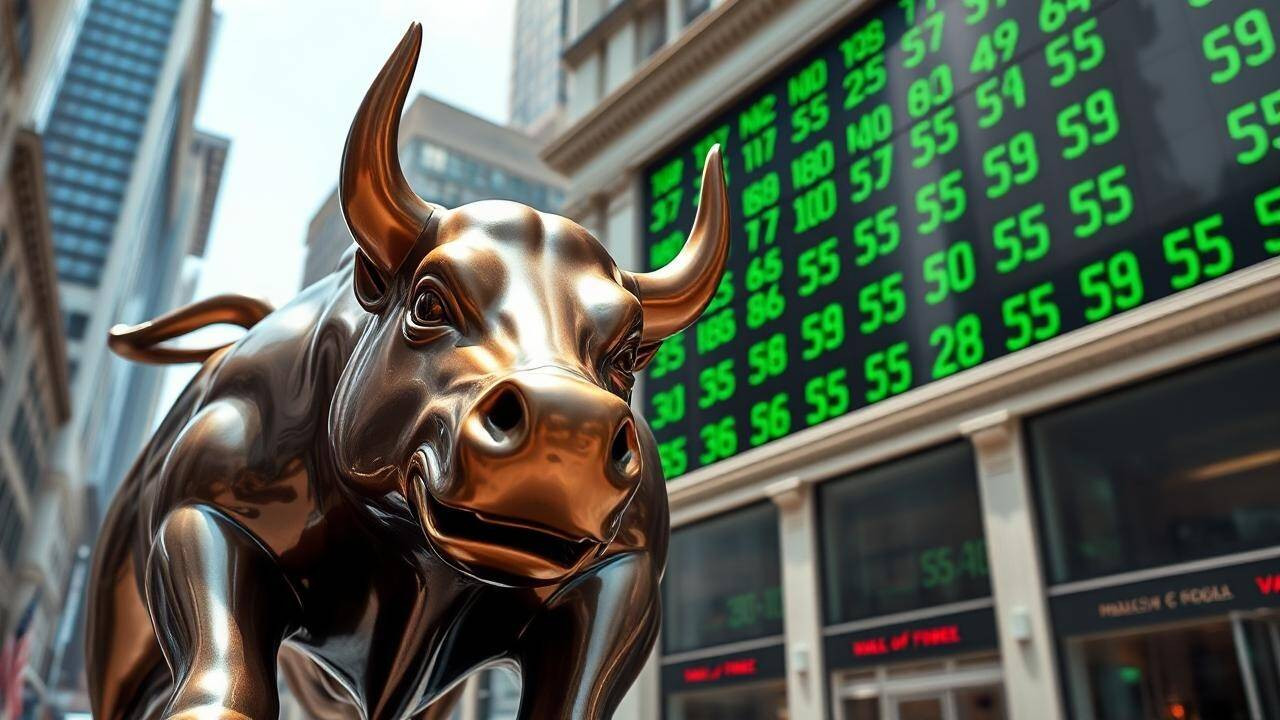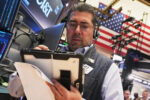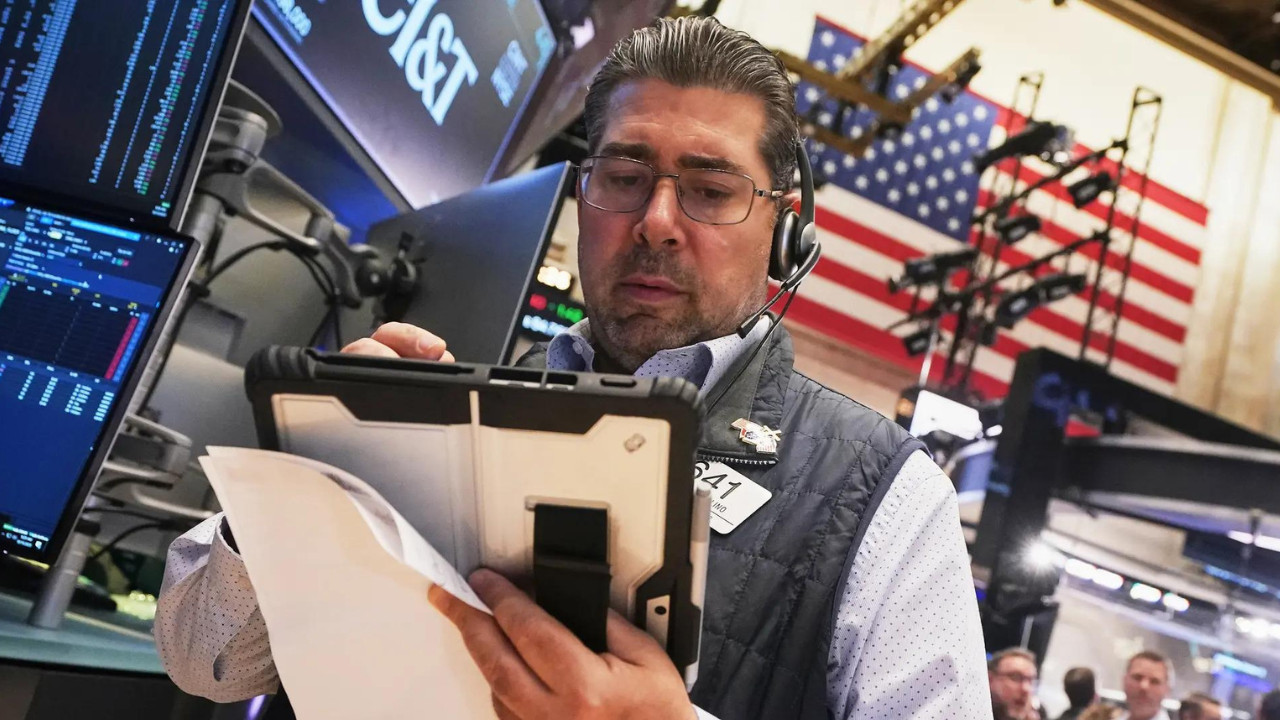US stocks opened positively on Thursday, nearing record highs, with the S&P 500 leading the charge. McCormick’s shares jumped following strong earnings and a positive outlook. Nvidia’s gains continued, making it the most valuable US company. Despite a contraction in the US economy, optimism remains due to anticipated growth.
Navigating the Economic Seas: Why Wall Street Shrugged Off a Soft GDP Report
We’ve all been there, right? You get a report card back that’s…not exactly stellar. Maybe you expected a little more, and suddenly, you’re bracing for the consequences. Well, imagine the U.S. economy got its report card, and it read: “GDP growth: Meh.” The surprising part? Wall Street seemed to barely flinch.
Yesterday, the latest GDP figures rolled out, revealing growth that was, to put it mildly, underwhelming. But instead of a collective market meltdown, we saw something quite different: a rather buoyant trading day. The Dow Jones Industrial Average climbed over 160 points, and the S&P 500 followed suit, inching upwards. What’s going on? Why didn’t the lackluster GDP news send shivers down investors’ spines?
Unpacking the Divergence: GDP Numbers vs. Market Sentiment
The apparent disconnect between economic data and market performance boils down to a few key factors. First, it’s crucial to remember that the stock market is a forward-looking beast. It’s not so much about where we are, but where we’re going. Investors are constantly trying to anticipate future trends, and sometimes those expectations diverge from current realities.
One possibility is that investors are betting on a swift rebound. Perhaps they see the slowing GDP as a temporary blip, a pause before the next surge of growth. Maybe they believe that government policies or technological innovations will soon kick in, revitalizing the economy.

Another critical piece of the puzzle is inflation. While slower growth isn’t usually something to celebrate, it can actually be seen as a potential antidote to runaway inflation. The Federal Reserve has been aggressively raising interest rates to cool down the economy and bring inflation under control. A slower GDP might suggest that these efforts are working, which could, in turn, lead the Fed to ease up on the rate hikes. This prospect can be music to investors’ ears.
Consider this: higher interest rates make borrowing more expensive, which can stifle economic growth. But they also make bonds more attractive, pulling money out of the stock market. If the Fed signals a willingness to slow down or even reverse course, the stock market can become a more appealing investment option once again.
Sector-Specific Stories: Beyond the Headline Numbers
It’s also important to remember that the stock market is not a monolith. Different sectors react differently to economic news. For instance, technology stocks, which have been particularly sensitive to interest rate hikes, might see a slowing GDP as a positive sign. On the other hand, cyclical stocks, which are closely tied to the overall economy, might be more negatively affected.
To get a clearer picture of what’s happening, it’s necessary to dig deeper than the headline GDP number and consider the performance of individual sectors. Certain industries might be thriving despite the broader economic slowdown, and that can influence the overall market sentiment.
The Human Element: Fear, Greed, and Everything In Between
Finally, let’s not forget the human element. The stock market is driven by emotions as much as by data. Fear and greed, optimism and pessimism – these forces can all influence investor behavior and lead to seemingly irrational market movements.
Perhaps investors were simply in a good mood yesterday, buoyed by positive earnings reports or other favorable news. Or maybe they were collectively ignoring the GDP figures, choosing to focus on other factors that they deemed more important. It’s impossible to know for sure, but it’s always wise to remember that human psychology plays a significant role in the market. This is often where algorithmic trading can fail, because these systems cannot fully grasp the human element of the GDP and market responses.
Looking Ahead: Navigating the Uncertainty
So, what does all of this mean for the future? The truth is, no one knows for sure. The economy is a complex and ever-changing beast, and predicting its future is a fool’s errand. However, by understanding the various factors that influence market behavior, we can at least navigate the uncertainty with a bit more confidence.
It’s likely that we’ll continue to see this push-and-pull between economic data and market sentiment. There will be days when bad news sends the market tumbling, and days when good news is met with indifference. The key is to stay informed, stay rational, and avoid making rash decisions based on short-term fluctuations.
For further reading, check out our article on [Understanding Market Volatility](internal-link-to-volatility-article).
Ultimately, Wall Street’s shrug in the face of a soft GDP report highlights the market’s complex relationship with economic realities. It’s a reminder that the stock market is a forward-looking, sector-specific, and emotionally driven entity, and that understanding these nuances is crucial for navigating the ever-changing economic seas. Whether this optimism is justified, only time will tell, but it’s a clear signal that investors are looking beyond the immediate horizon.







